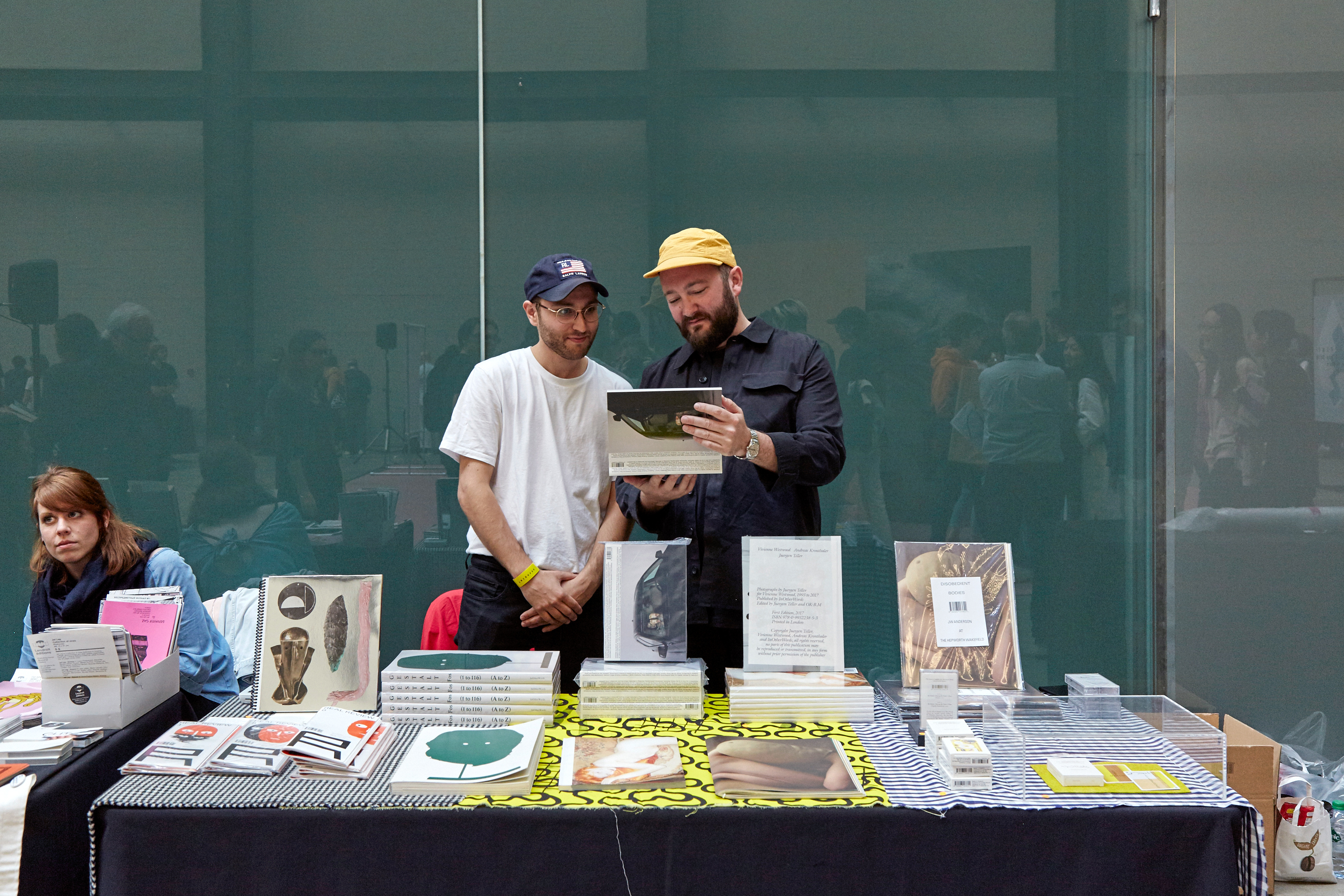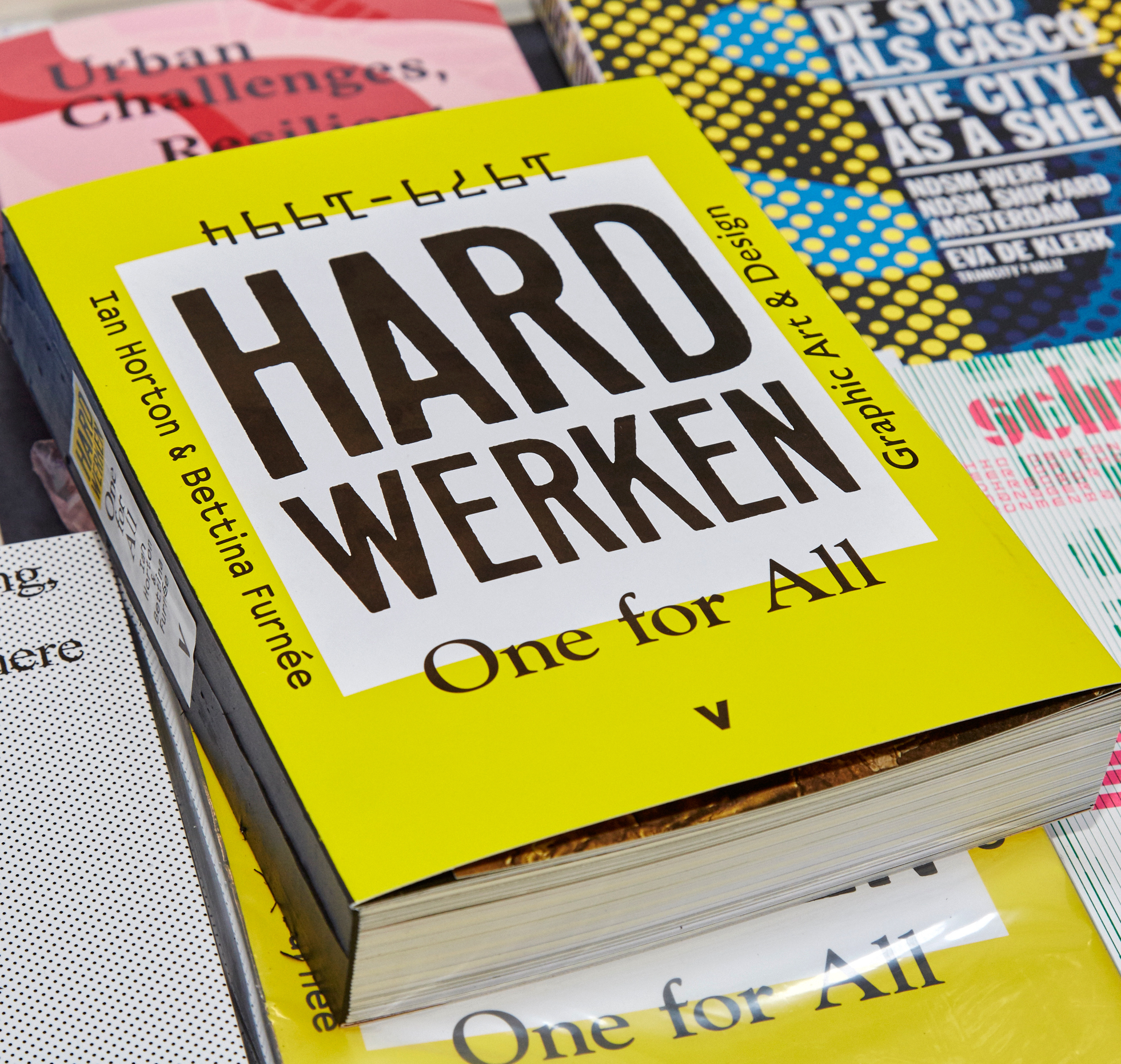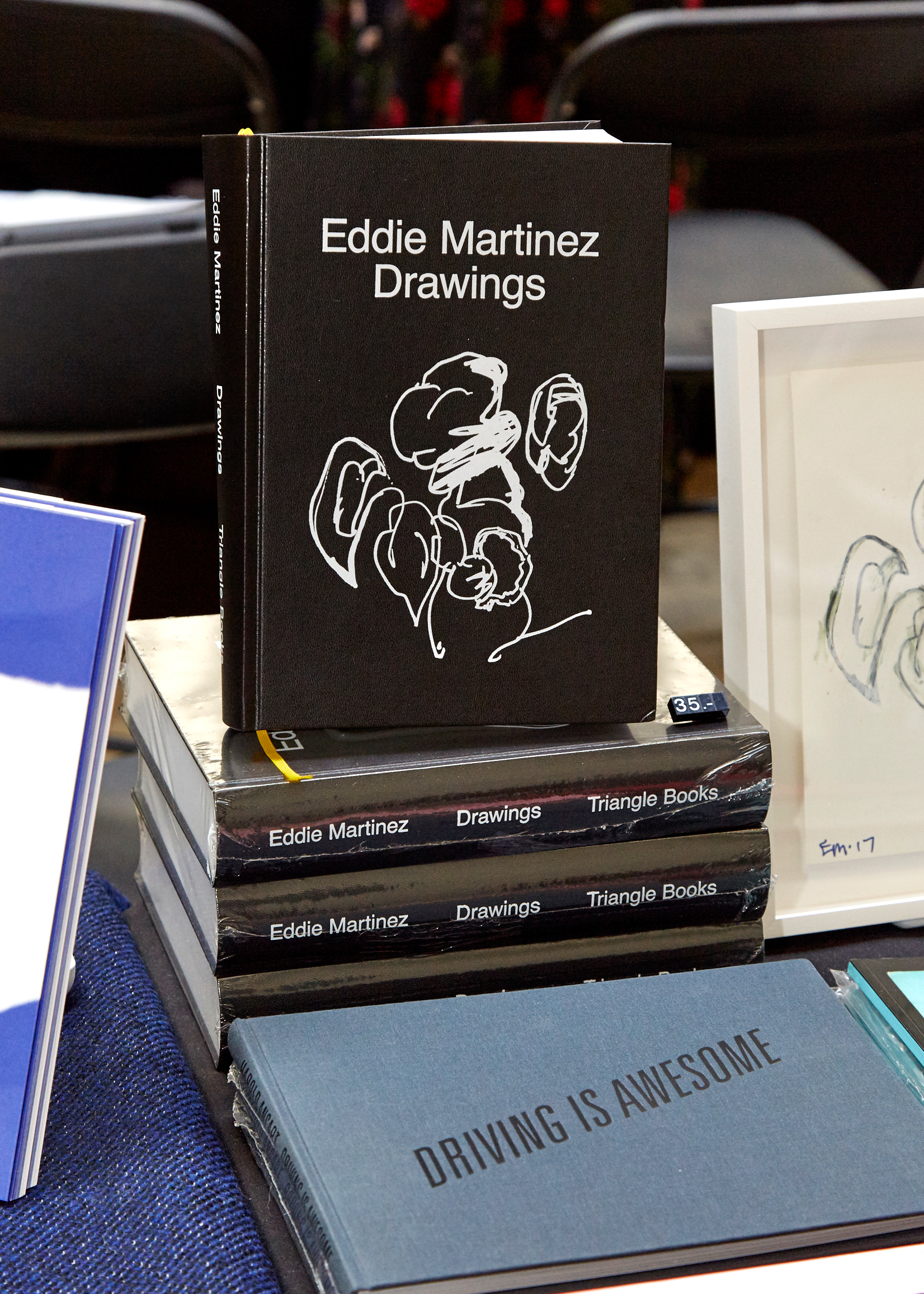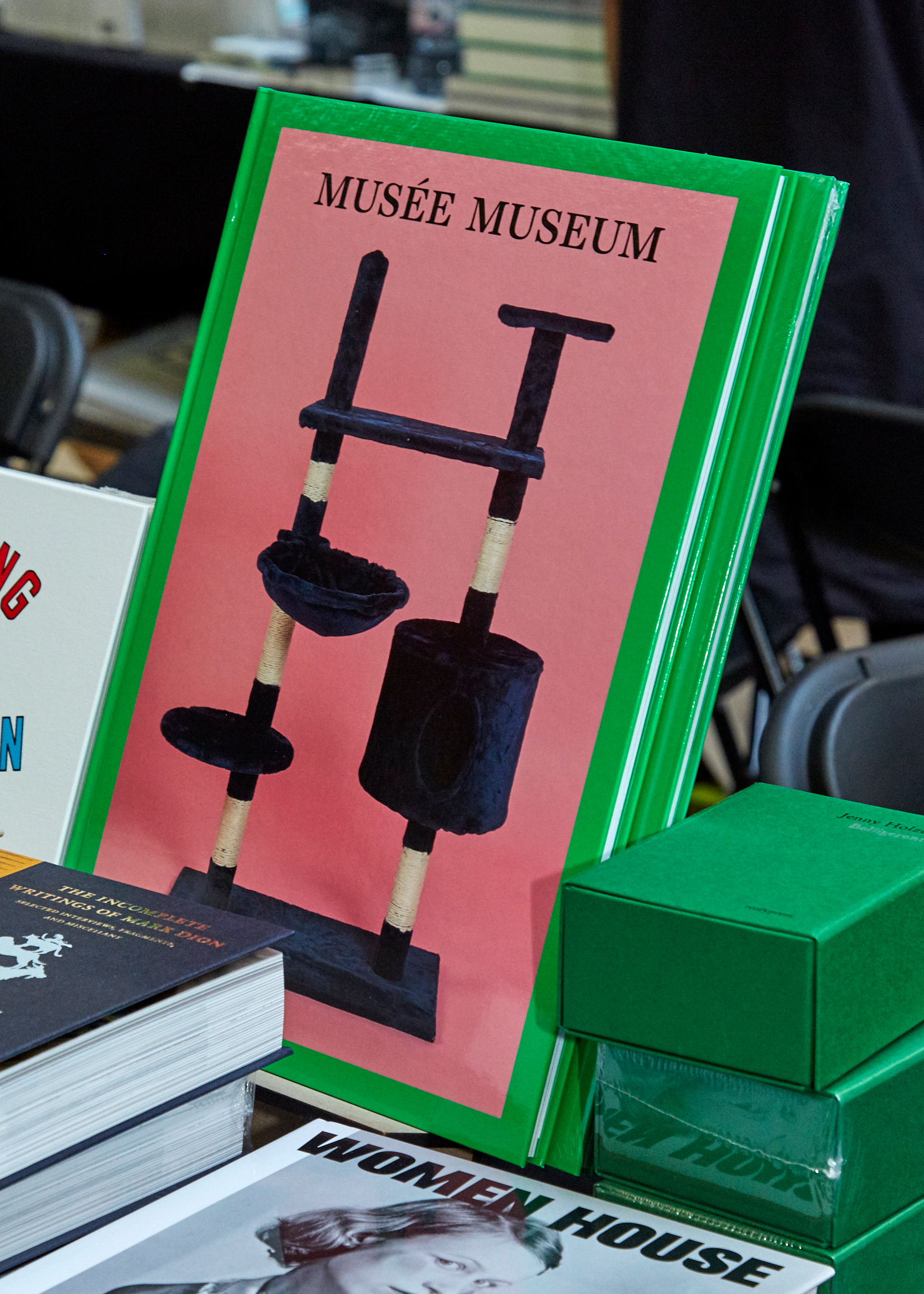On the weekend last May, Offprint London – an art publishing fair that takes place on a locative circuit between London and Paris – took the reigns of the Tate Modern’s Turbine Hall for its fourth edition. After filling the Tate’s notoriously grandeur walls with publications brimming with art, graphic design and photography, it now stands as one of the biggest fairs in Europe, and rightfully so.
Having grown tremendously with popularity, Offprint now welcomes over 10,000 visitors into the fair, with 140 independent and experimental publishers breaking down the elitist barriers that more or less dominated the publishing scene over the past few years. Yannick Bouillis, founder of Offprint and previous political journalist, first began his venture with the fair in 2010 – as LUMA Foundation’s platform for supporting socially engaged creatives. Back then, the aim was to give a voice to the unestablished, or lesser-known publications, that previously circulated softly and silently outside of the mainstream. Now, print publishing is flourishing with thanks to Offprint’s supporting pillars, with the likes of Ditto, a publishing company based in east London, the Netherlands-based biannual magazine NXS, graphic designer Jonathan Castro as a small example of those demonstrating a prosperous pool of creativity. We had the chance to speak to Yannick about the reasons for starting Offprint, his thoughts on the current state of print publishing and how he pieces together such an impactful fair that continues to evolve.
To begin, what exactly were your reasons for launching Offprint?
I started Offprint in 2010 and back then the context was completely different – there were very little social networks and publishers didn’t have any space to show, sell or read their books. The main issue for the art world and for the art publishers was Amazon, because of the fact that you could order everything online. So as Amazon got more popular, it made all of the bookshops disappear.
At that time I was very interested in the niche publications that you would find in school or in various places all over Europe – they were really interesting and demanding publications about design, with very little visibility in a bookshop. However, with Amazon building up their presence decreased, and all of the bookshops would reject publications because they didn’t have any income or books to sell. That’s why I started the fair.
- Eddie Martinez Drawings by Triange Books. Courtesy Offprint London.
- Musee Museum. Courtesy Offprint London.
What do you think draws people to print publishing?
As time went on, visibility for creative people changed completely because of the rise of social media. Now, the game is so different for magazines, creatives, and designers. But it’s still printed matter, it’s still very key for a lot of creative people, as it gives the feeling of something really meaningful. It’s like having an exhibition; it’s not like having your picture on a computer. All of those small details make print publishing very relevant for these small details because I think if it’s printed then it matters more. You can then see how, as a magazine, people are going to persevere very differently when it’s going to be printed, where even the perception, the intelligence, the critical deepness of an article is totally different when it’s not online and in the physical form. You give more attention and credit to something printed.
When something is happening and it’s very strong, it’s not about choosing, it’s more about the acknowledgment of its existence.
With a background in political journalism, how do you think this has influenced your current work as an art fair curator?
It has definitely influenced me. The first influence is because I’m not from the art world. I rely on a feeling and I know when something is good, rather than balancing between certain restrictions, which I think makes it very difficult for people. Offprint brings together publishers, small publishers, schools, and students, and since it launched the perception has changed and you can now be interested in creative people for being creative, even if they’re not institutionalized and even if they don’t have specific ‘things’ to be serious. What I learned from journalism is that I don’t have any dogmatic issues and, instead, I come in and ask questions. So I can go on with an empirical attitude, thinking about new things. I also specialized in foreign policy, politics and the philosophy of ideas, which is completely different but certainly influenced my way of thinking.
Since you launched Offprint, have you seen any major changes in the art or publishing landscapes?
Absolutely. What is really interesting, and you can see it in other industries, such as music, is the rise of incredibly compelling voices which exist next to the system. The social networks made this possible by elevating this voice, like the ways in which an online magazine does. I think the biggest change is that you now have the tools to exist – mainly online – but also that these tools are not bad and they are very useful. This is actually more interesting than the system, and there are now new means of journalism, publishing, music, and art.

Run us through the process of curating the fair – do people come to you? Are there any specific themes or genres that you look out for?
Strangely, I don’t curate it at all. I actually don’t believe that you can curate. When something is happening and it’s very strong, it’s not about choosing, it’s more about the acknowledgment of its existence. I search the internet, check Instagram, Facebook, Twitter – all of the social channels all day long. I keep reading and suddenly I see something interesting; they are there, they have a network, it’s happening and I just ask them if they can come to Offprint. There are now 10,000 people coming to the fair and somehow you choose but also you don’t choose. This is because they make the news – there’s a huge community out there and I just have to be smart, research and reach out to them. It’s a very important process of mine.
How do you source your content, is it mostly through social media?
Social media is a very strong platform. The main problem, however, is that all organizations have an algorithm where they always bring you towards the mainstream. The more clicks you receive, the more they bring you in the loop towards the people. My job is to hover around and go against the current, which makes it my main source but also my enemy. I have to challenge them to avoid them telling me what’s going on and to decide for myself. That’s why I check in with my notepad regularly and I write down the people that I want to follow, and then I source them on Instagram.
Where do you see Offprint heading in the future, what’s next in the pipeline?
The idea is to bring people together; currently, none of the publishers are online, but everyone has an online presence and they’re all part of a community. I’d be looking to extend the fair to cover online publishing because there are many things to bring to the table and many more categories to delve into. It’s not only strictly graphic design, art and photography – I like design, music, humanities and the list goes on. Offprint could also branch out into artist editions, so not just purely publishing, where we could present creatives ranging from fashion designers to academics who tackle psychological issues. Creativity is interesting in all its vastness and breadth of sectors; if you’re good and critical, just bring it. I’m going to try to be less categorized.





